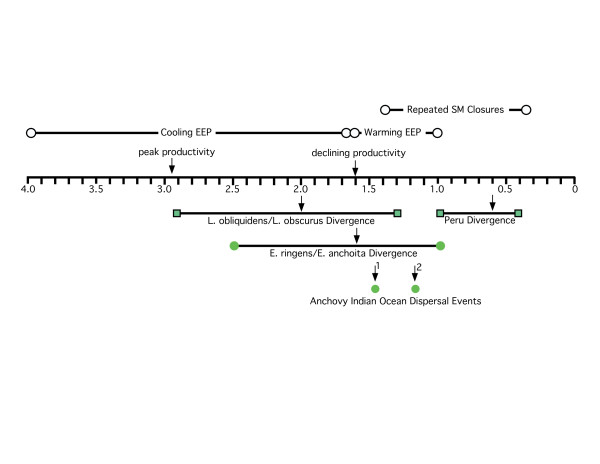Figure 7.
A chronological correlation of paleoceanographic events and the phylogeographic histories of the dusky dolphin and anchovy (Engraulis sp). Above the timeline are paleoceanographic events, with the point estimates and range of dates for each event. EEP = Eastern Equatorial Pacific; SM = Strait of Magellan. Below the timeline are events in the history of anchovy and dusky dolphin populations. Bars represent 95% confidence intervals for point estimates, indicated by black arrows. At least as early as 4.3 mya, a cooling trend began in the Eastern Equatorial Pacific (EEP), causing sea surface temperatures in this tropical region to drop from 26°C to as low as 20°C in the late Pleistocene [51]. This drop in temperature caused a peak in primary productivity 2.9 mya that was 2 to 3 times greater than average values earlier in the Plio-Pleistocene [51]. At 1.6 mya, this productivity began to decline as sea surface temperatures began to rise [51]. As warmer tropical waters returned, the range and abundance of anchovy in the EEP would have declined, resulting in the gradual disappearance of this dispersal corridor, consequently resulting in an anti-tropical division of dolphin populations.

